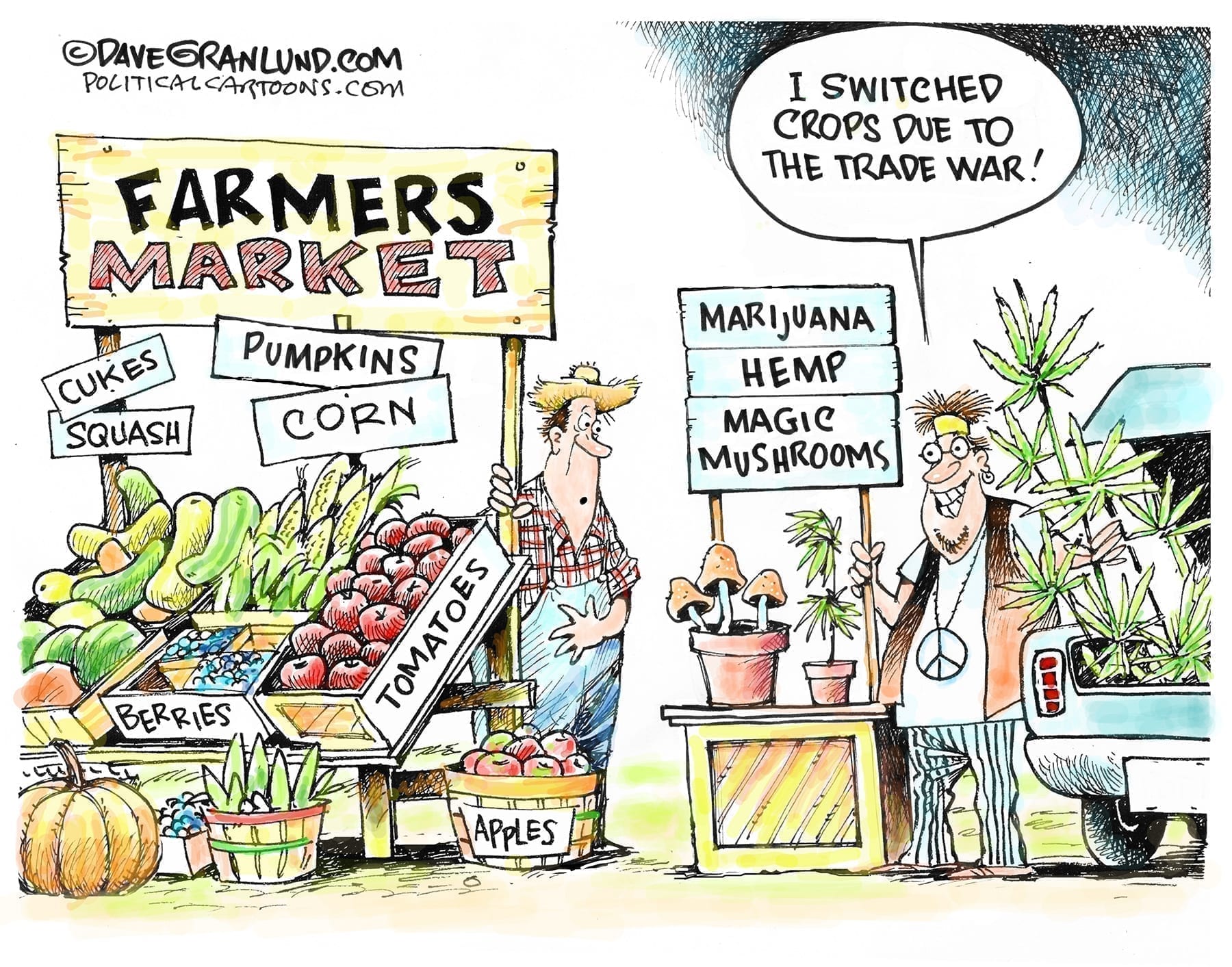
Are Vertical Farms on the Up and Up?
Tyrades! by Danny Tyree
When I was a carefree lad watching “Lost in Space,” the Robinson family’s high-tech hydroponic garden sounded neat. Vertical Farms
Now I worry that the science fiction program sowed seeds that are taking us too far away from our roots of harvest festivals and “planting by the signs.”
According to a recent Wall Street Journal article, “vertical farms” may be the wave of the future – if we can find enough vertical WORKERS. (“Quit nagging, mom. I can’t have been slumped over the video game console for more than – HOW long does it take for mold to make penicillin? I WOULD whip out RENT MONEY for the basement, but I need both hands free for the controller. Sorry.”)
Vertical farms are located close to urban areas and occupy multistory buildings. Crops are grown in water or misted air instead of soil and are bathed in carefully controlled LED lights instead of natural sunlight.
Yes, we have reached an era when Paul Harvey’s 1978 speech “So, God made a farmer” is replaced with “So, the HR Department made a farmer.” If slavery reparations do materialize, instead of “40 acres and a mule,” beneficiaries will receive “40 stories and a drone.”
One might assume that with all the vaunted EFFICIENCIES of vertical farms, there will be no more need for agricultural SUBSIDIES. But as one industry expert chuckled, “How amusing. No, right here next to the trays and trays of squash, we have LOBBYISTS stacked all the way to the ceiling.”
Does no one worry about a handful of vertical farmers gaining too much market share? Seinfeld wouldn’t stand a chance against the CHICKPEA NAZI.
Aren’t you concerned about artificial intelligence (AI) taking on a big role in operating vertical farms? What if the smarty-pants devices get a little too self-aware and bossy? (“Good boy. You have raised your daily quota of vegetables. Now, EAT…YOUR…VEGETABLES! Look the other way while you feed them to the dog under the table? I’m sorry, Dave. I’m afraid I can’t do that.”)
I’m sure there are vertical-farm employees who take great pride in their work, but for most it will be just another 9-to-5 grind. Civilization will lose something indefinably precious when there are no more fiercely independent, calloused, sunbaked, jack-of-all-trades hometown heroes praying for relief from drought or flood. (“Heavenly Father, give me the right emoji to tell the tech guy on the next shift he needs to fix this glitch.”)
Some traditional “land spreadin’ out so far and wide” farms have passed through numerous generations. It’s not very inspirational for a vertical-farm owner to tell his progeny, “Someday all of this will be yours – unless some cybercriminal hacks the AI and the entire crop winds up in a Nigerian widow’s bank account.”
Perhaps we can rein in the breakneck pace of vertical farming via labeling. We currently have labels stigmatizing GMO crops. Maybe produce will bear a sticker announcing, “This rutabaga was produced by an underemployed 17th-century Antarctic LGBTQ Literature major who thinks chocolate milk comes from brown cows.”
The WSJ article spotlighted all the advantages of vertical farming, but it remained silent about the Big Picture of the ecosystem impact on all the bugs, birds and critters that depend on coexisting with traditional farmers.
Hey, is that a plague of dislocated locusts hitting office workers up for spare change?
“Danger, Will Robinson – danger!”
Viewpoints and perspectives expressed throughout The Independent are those of the individual contributors. They do not necessarily reflect those held by the staff of The Independent or our advertising sponsors. Your comments, rebuttals, and contributions are welcome in accordance with our Terms of Service. Please be respectful and abide by our Community Rules. If you have privacy concerns you can view our Privacy Policy here. Thank you!
Click here to submit an article, guest opinion piece, or a Letter to the Editor




